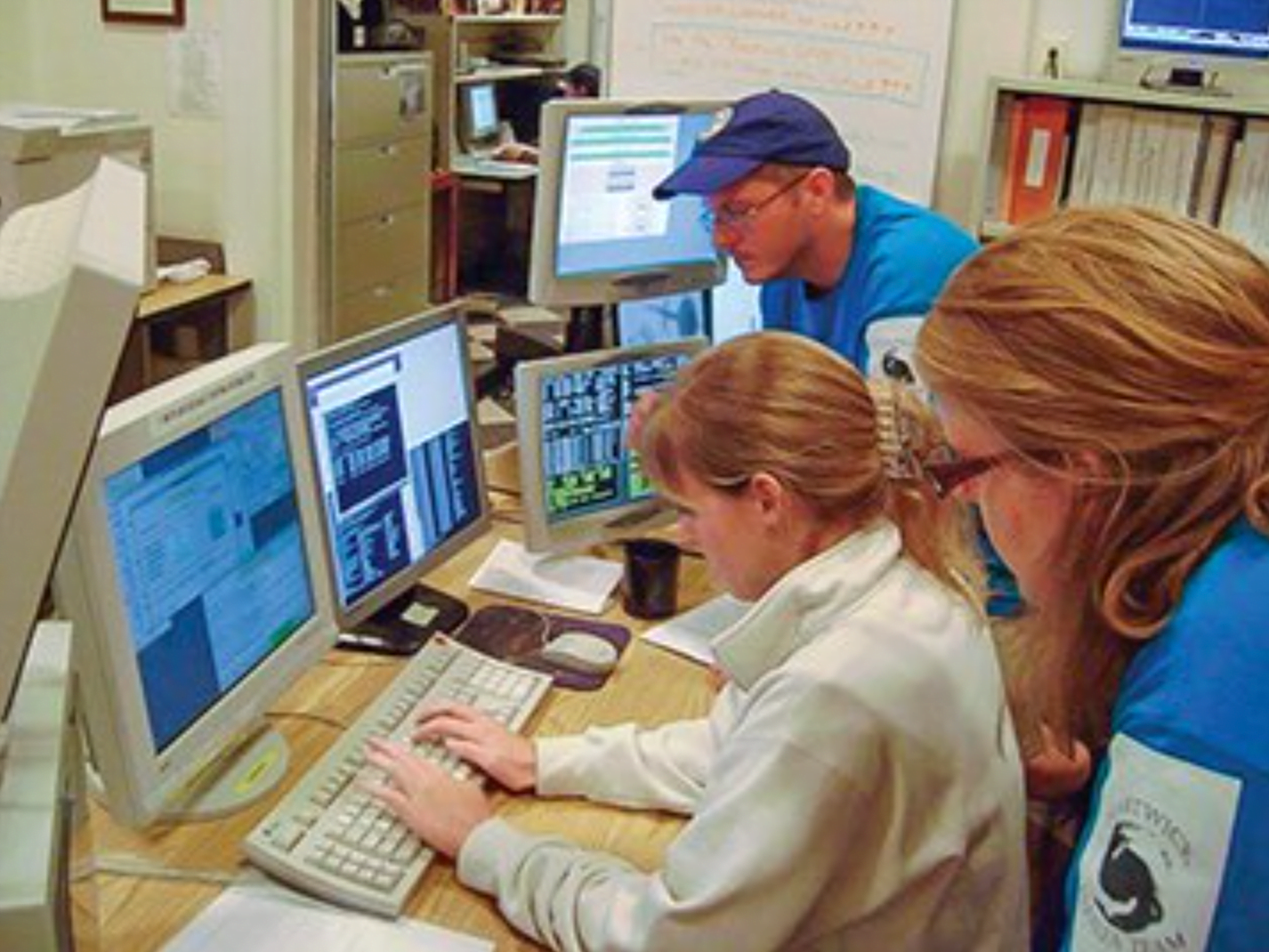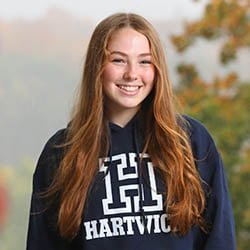Eyes on The sky
When Nick Volk ’23 opened his Hartwick acceptance letter, he saw stars.
“Professor Troischt congratulated me and filled the envelope with space-themed confetti!” Nick says of the welcome. It was a fitting message from this enthusiastic educator/astronomer who is now his mentor.
Physics Professor Parker Troischt centered his early research on theoretical astrophysics, with a focus on how energy is transmitted around black holes. Exciting work, but “not the easiest thing to get undergraduates involved in,” he admits.
Determined to make connections with his students, Troischt found inspiration at a meeting of the Astronomical Society of New York (ASNY). There he met colleagues working on a galaxy survey using the expansive radio telescope at Arecibo Observatory in Puerto Rico. “I actually changed my field so I could contribute to this project and get Hartwick students involved,” Troischt explains. He began working with the Undergraduate ALFALFA Team (UAT), and has been active ever since.
With funding from the National Science Foundation (NSF), Troischt engaged students in advanced research on campus, then took some to Arecibo over various J Terms, spring breaks, and summers for coveted time working with the telescope.

Michelle Brault ’11 remembers. “We were there for a week, taking scans of the night sky for a neutral hydrogen survey,” says this physics and French double major. “We got to control the telescope for a six-hour block, letting it drift so we could take scans of patches of the night sky. When I was able to operate the telescope’s arm, it was a good — but nerve-wracking! — lesson in working with expensive equipment.”
Now a Lead Research Engineer with General Electric, Brault credits the Arecibo experience for developing interests that led to her career. “Normally undergraduates work with data that came from the telescope,” she says, “but we actually got to do the acquisition ourselves.”
When Arecibo’s main dish collapsed in 2020, Troischt and his ALFALFA colleagues created new opportunities. He and his students now use the Green Bank Telescope (GBT) — the world’s largest steerable radio telescope — in West Virginia to study the skies.
Volk is one of the students Troischt brought into a UAT study of supernovae and their host galaxies, also funded by the NSF. “Last summer I started working on collecting and sorting data, identifying galaxies with previously measured supernovae that needed follow-up studies,” Volk explains.
Troischt says the data will be used to determine accurate distances to galaxies, in a way that won’t be obscured by the expansion of the universe. “We can’t take a tape measure to reach even the nearest star,” he says, smiling. “But if you look at how bright a supernova is, you can measure the amount of energy and calculate distance.”
Volk contributed to Troischt’s work on a collaborative GBT observation proposal, which the NSF ranked as an “A” project, the highest level possible. The ranking brings 132 hours of telescope time for Hartwick students, their professors, and other UAT members; time in which they’ll gather data on the gas environment of galaxies hosting supernovae. “That rating, and that access, means the science community thinks our work is valuable,” Troischt says.
Conditions permitting, Volk and other astronomy students will join Troischt at Green Bank this year to observe 220 galaxies where supernovae have occurred. Looking ahead, Volk says, “There’s still so much to explore.”


